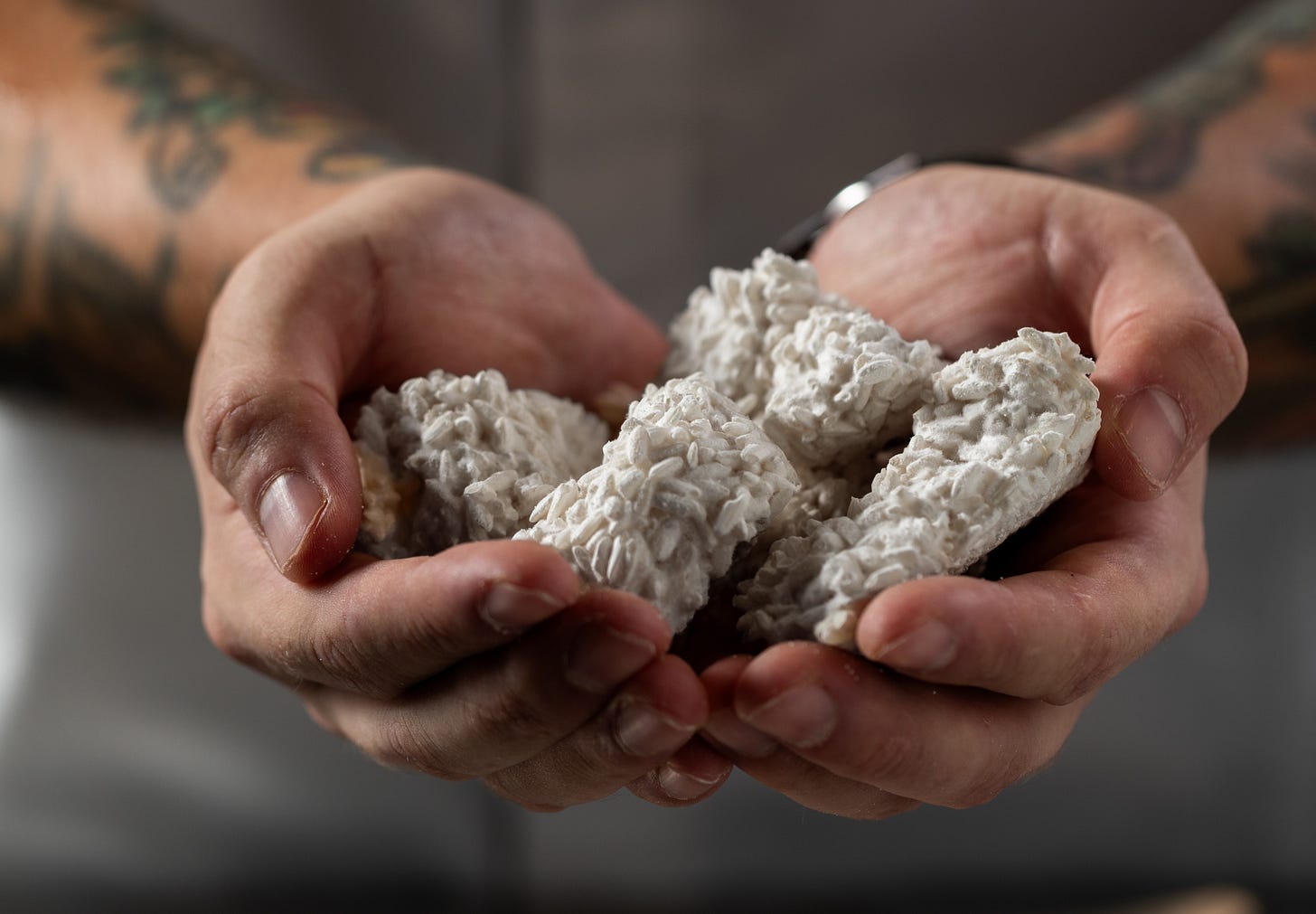Double-Fermented Amazake Yogurt
Naturally lactose-free and sugar-free, this plant-based yogurt is fermented with koji and lactic acid bacteria
Fermenting yogurt from amazake is a two-step fermentation process that leverages the enzymatic activity of Aspergillus oryzae (koji mold) to break down starches into fermentable sugars, which are then metabolized by lactic acid bacteria (LAB) to produce yogurt. This innovative approach transforms amazake, a traditional Japanese rice beverage, into a creamy and tangy plant-based yogurt. By combining the enzymatic breakdown of starches with LAB fermentation, this method provides a unique way to create a plant-based yogurt with complex flavors and natural sweetness.
Amazake
Amazake is traditionally made by fermenting cooked rice with koji mold. During this primary fermentation, the enzymes produced by A. oryzae (amylase and protease) convert the starches in the grain into simple sugars, such as glucose, and break down proteins into amino acids. This process creates a sweet, nutrient-rich base that serves as the foundation for subsequent fermentations.
For more details on amazake, refer to the Amazake module of the Cereal Fermenter course via the link below:
Yogurt Fermentation: Process and Principles
In the secondary fermentation, LAB such as Lactobacillus delbrueckii subsp. bulgaricus and Streptococcus thermophilus are introduced to the amazake base. LAB require simple sugars for metabolism, and the koji-driven amazake fermentation ensures the base is rich in glucose and other fermentable sugars. This process is analogous to sake brewing, where koji fermentation prepares the substrate for yeast fermentation; however, in this case, we pitch yogurt cultures instead of yeast.
LAB convert sugars into lactic acid through glycolysis. The accumulation of lactic acid lowers the pH, thickening the substrate and producing the characteristic tangy flavor of yogurt.
Keep reading with a 7-day free trial
Subscribe to cosmos society to keep reading this post and get 7 days of free access to the full post archives.




